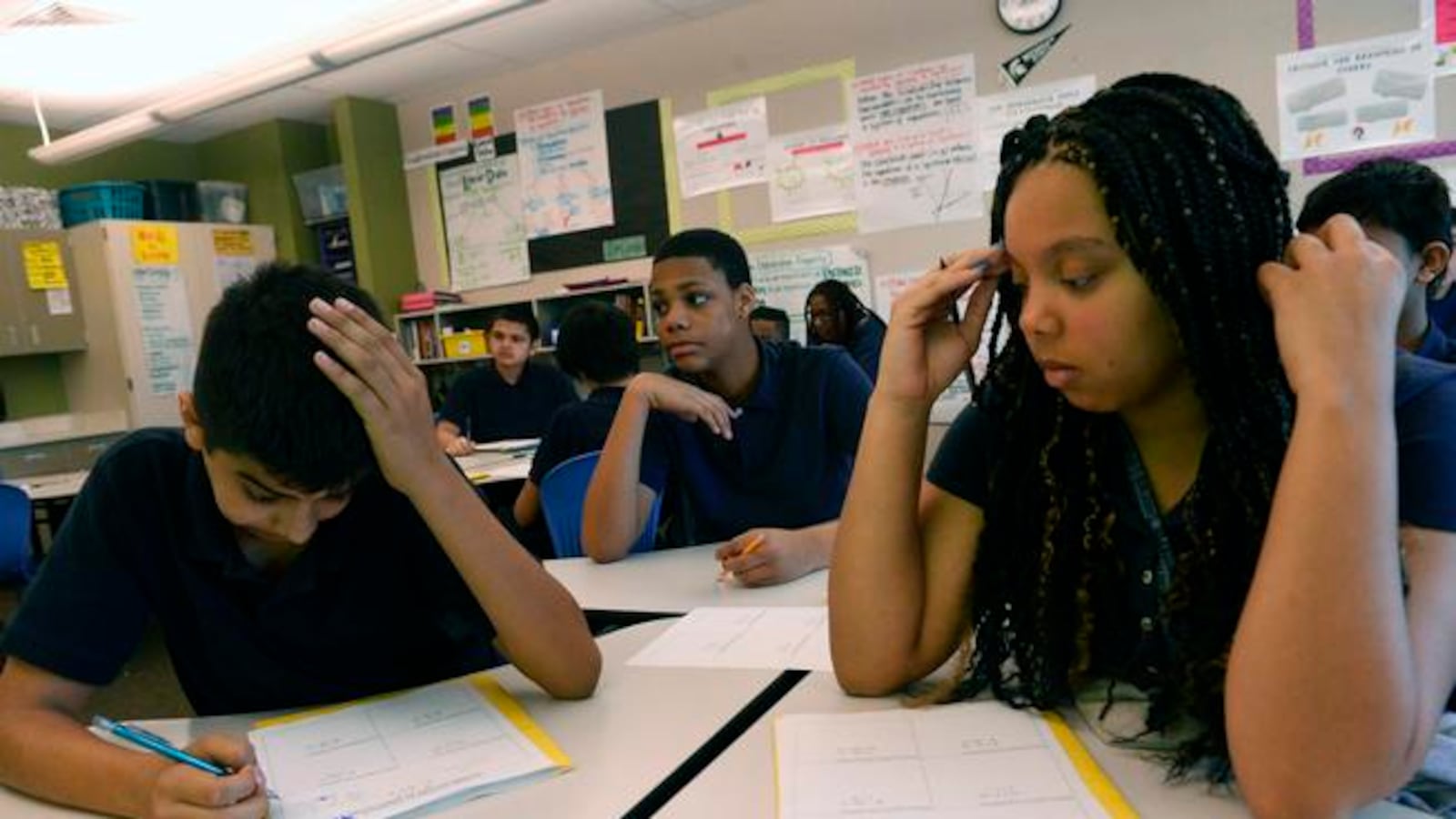Six Aurora schools are no longer on a path to facing state sanctions for low performance, according to new preliminary ratings state officials sent to districts.
Aurora officials shared the news of those six school improvements with the district’s Board of Education Tuesday night. But the update also included news that another seven schools that weren’t on the state’s watch list have slipped and are now on it. Several others, including Aurora Central High School, failed to make enough improvements to get off.
In total, 19 Aurora schools this year have been flagged by the state for low test scores. That’s more than double the number of schools that were on the state’s academic watch list when Superintendent Rico Munn was hired three years ago to boost student achievement.
Because of the poor performance of its schools, the district also remains on the state’s watch list, but has one more year to show significant improvement before the state is required to take action. The district serving more than 42,000 students is the largest on the state’s watch list.
Munn said Tuesday the district is not where it needs to be yet, but said that there are “positive signs,” and that it’s too early to change the district’s improvement strategies.
Aurora schools on the state’s watch list |
Fletcher Community School
Gateway High School
North Middle School
Sixth Avenue Elementary
South Middle School
Vaughn Elementary
Virginia Court Elementary
Sable Elementary
Wheeling Elementary
Paris Elementary
Aurora Central High School
Jewell Elementary
Dartmouth Elementary
Kenton Elementary
Laredo Elementary
Aurora Hills Middle School
East Middle School
Vista Peak Prep
AXL Academy (charter)The district’s most ambitious reform effort is the creation of an “innovation zone.” Approved earlier this year by the State Board of Education, five of the district’s schools have received waivers from some union, district and state rules. That freedom allows the schools to extend their day, create their own curriculum and give principals flexibility to staff their schools.
Another school that remains on the state’s watch list, Fletcher Community School, is in the process of being converted into a charter school.
“We are not waiting for CDE to give us a certain mandate,” said Lamont Browne, executive director of autonomous schools. “We are being proactive to improve our schools now.”
The latest preliminary ratings for the schools don’t capture all of those changes, officials pointed out.
“It’s too early to evaluate the work of the innovation zone,” Munn said. “It’s too early to evaluate a conversion process. It’s too early to evaluate some of that stuff.”
During Tuesday’s board meeting, district staff told the board about anecdotal evidence showing improvements in school culture, declines in suspensions and expulsions, and increased engagement from students and teachers.
The ratings the state released Tuesday are not final, Munn told his school board, and the district plans to appeal some of them. The state will finalize ratings later this winter.
In the case of schools or districts, Colorado law says the state board must take action after five years of low performance based on reviews by the state. State officials could direct the district to close schools, turn over management to third party operators or charters, or create innovation plans.
Aurora Central High School is the only district school that has been on the state’s lowest performance ratings for five years and again failed to make improvements, meaning it will face state sanctions later this year.
Munn said the district will ask the state board to accept the already approved innovation plan as the state’s corrective action for the school. If it is accepted, the school would have more time to show improvements with the same plan.
Munn says the district is also going to look at the six schools that moved off the list: Century Elementary, Lansing Elementary, Lyn Knoll Elementary, Mrachek Middle School, Boston K-8 and Vista PEAK Exploratory. All schools except for Boston K-8 were on the state watch list for only one year. Boston K-8 had been on the clock for four years. State data on student growth, released last month, showed Boston K-8’s middle school students showed significant growth.
“It’s a lot of individual stories,” Munn said. “That rolls up to a district story at a certain level as to what trends are we seeing. How do we build on things that are working and stabilize those things?”
Munn says they have early indications that help provided by consultants hired to work with the schools on various issues such as discipline and teaching, are proving successful and said he is pleased with the number of teachers and administrators receiving training.
“We did a lot of launching over the first year and a half and this year is going to be about monitoring and about making sure that we got the right capacity,” Munn said. “I think it’s more about digging into the work.”

